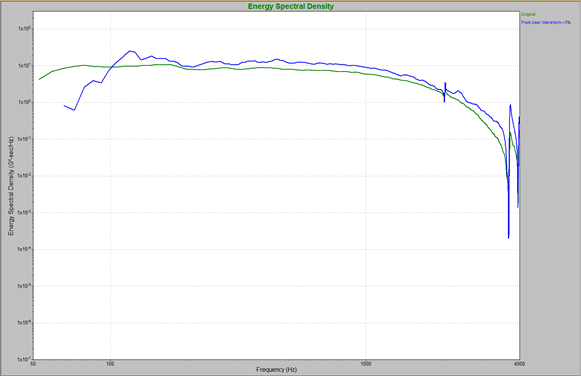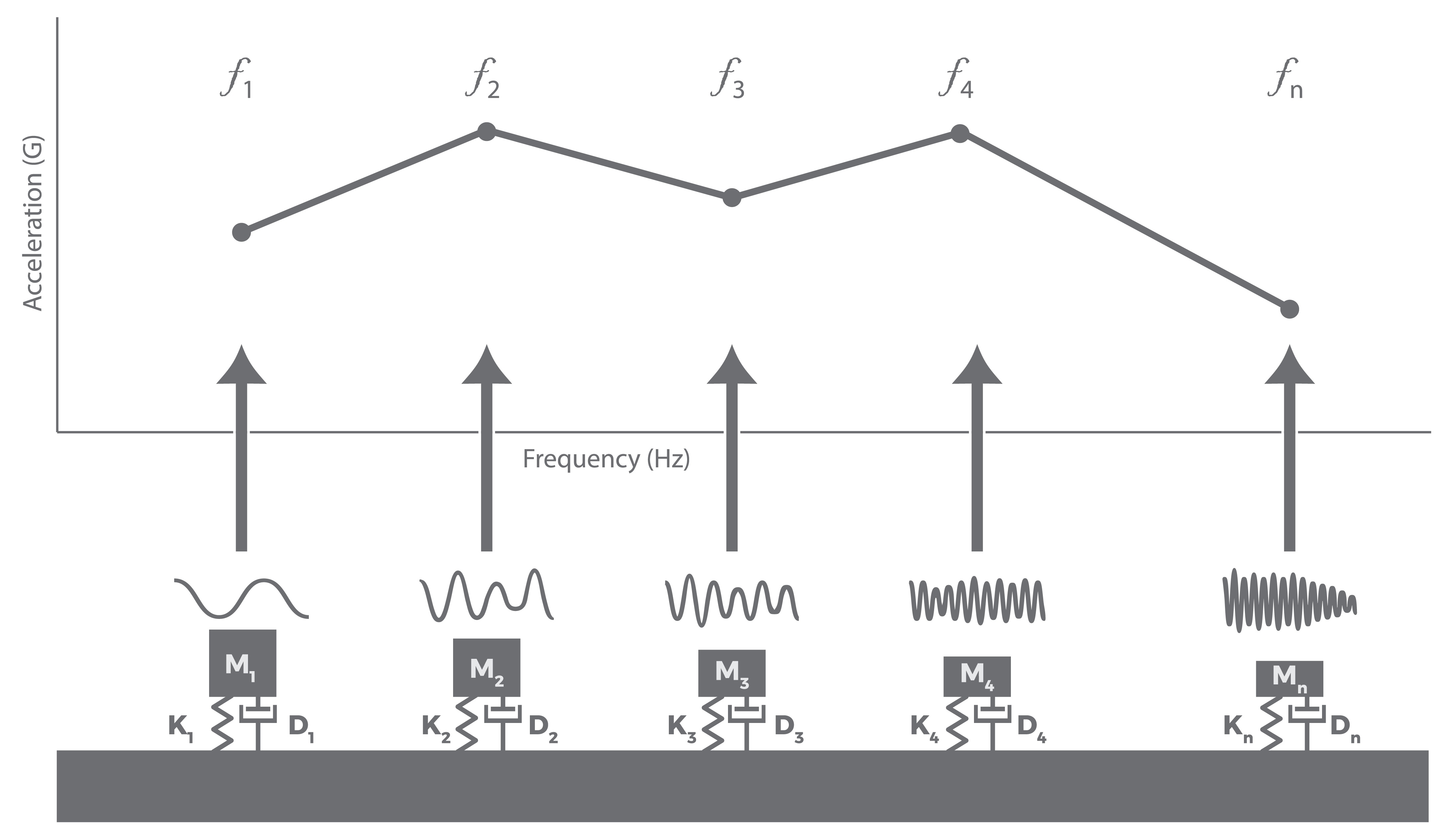Shock testing is critical to ensuring equipment will survive sudden impact or high acceleration transient shock. To test equipment against complex shock events, engineers often employ the shock response spectrum (SRS). The SRS uses a mathematical model to synthesize a shock pulse that simulates a transient event on a shaker.
Similarly to sine and random vibration testing, engineers want their SRS test profile to reflect the end-use environment (EUE) as closely as possible. This likeness helps confirm that the test levels are sufficient and unexpected failures post-production are unlikely.
While synthetic response spectra are standard in the testing industry, engineers can convert a recorded time-history file to an SRS to generate a test profile comparable to the EUE.
Recordings in Place of Synthetic Waveforms
Engineers typically select a synthetic waveform to synthesize an SRS pulse. Selecting a synthetic waveform depends on the specifications; standard practice is to choose whichever waveform generates a pulse closest to the specified SRS. For example, the “burst random” and “enveloped burst random” waveforms produce long-duration, stationary random waveforms suitable for earthquake simulation.
However, synthetic waveforms are not one-to-one replications of real-world transient events. The difference between a synthetic SRS pulse in the lab and a shock event in the EUE can be significant. The only way to ensure that a test represents the EUE is to build a pulse from a field recording.
In VibrationVIEW, engineers can modify field recordings to meet or exceed a specified SRS. This method of test generation results in a time waveform reflective of the EUE with a similar frequency response function.
Enveloping Recordings
The following method of converting time history to an SRS combines multiple data sets into one representative waveform. A synthesized SRS waveform created with one recorded shock event would give an incomplete description of shock vibrations that may occur in the EUE.
The correct way to combine multiple data sets of transient events is to find the maximum value at each frequency rather than the average acceleration. This “maximum enveloping” technique produces an SRS curve using the maximum acceleration value at each frequency from a group of real-world data sets.
Why Maximum Acceleration?
The SRS calculation models response channels using a theoretical series of single-degree-of-freedom mass-damper-spring oscillators. The natural frequency of each SDOF oscillator defines the plot’s horizontal axis, and a computed response for each oscillator makes up the vertical axis. This response is the absolute maximum acceleration of the SDOF oscillator to the pulse, not the average acceleration.
Convert a Time History to SRS
The VibrationVIEW software can implement the max enveloping technique to convert a time-history file to an SRS. It supports SRS iteration to create a waveform that meets or exceeds the SRS maximax breakpoint table values. The following paper discusses this approach in more detail.


